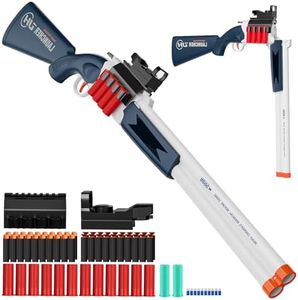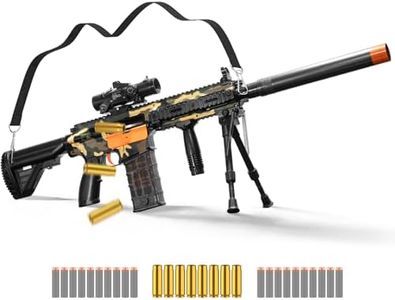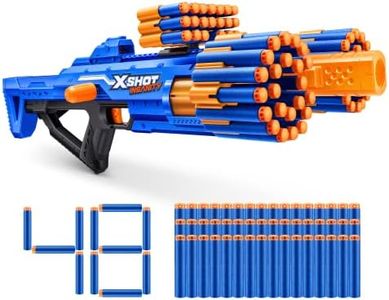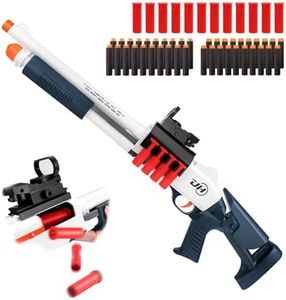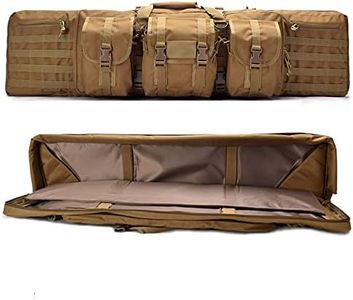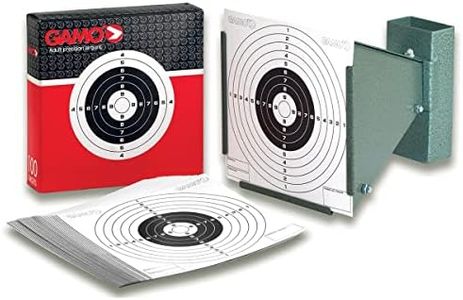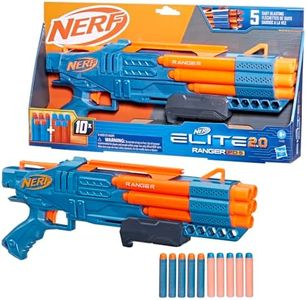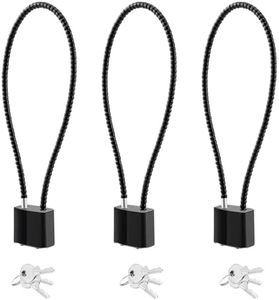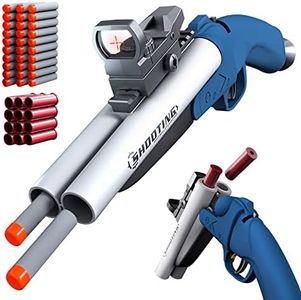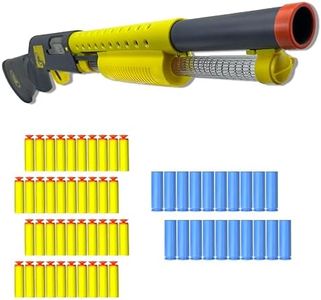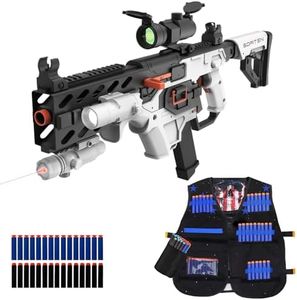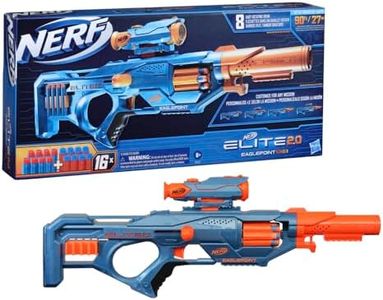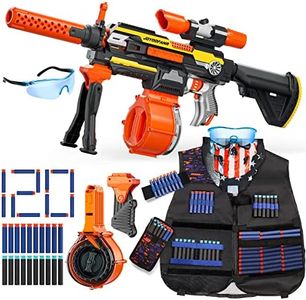We Use CookiesWe use cookies to enhance the security, performance,
functionality and for analytical and promotional activities. By continuing to browse this site you
are agreeing to our privacy policy
10 Best Bb Gun Rifles
From leading brands and best sellers available on the web.Buying Guide for the Best Bb Gun Rifles
When choosing a BB gun rifle, it's important to consider how you'll use it—whether for target practice, plinking, teaching firearm safety, or even for small pest control. By understanding the key features, you can match your needs with the best type of BB rifle. Thinking about the firing mechanism, power, accuracy, and safety aspects will help you pick a model that feels comfortable and fun while also being safe to use.Power SourceThe power source of a BB gun rifle refers to how the gun propels the BBs. Common types include spring-powered, CO2-powered, and pneumatic (pump-action). Spring-powered BB rifles require manual cocking and are typically simpler and easier to maintain, making them good for beginners or casual use. CO2-powered rifles use small, pre-filled cartridges for consistent shooting and rapid fire, ideal for those who want semi-automatic action and smoother shooting sessions. Pneumatic rifles use compressed air from pumping, allowing you to adjust power with more or fewer pumps. Think about how much effort you want to put in per shot, how many shots you'll take before reloading, and your preference for simplicity versus performance.
Velocity (FPS - Feet Per Second)Velocity, measured in feet per second (FPS), tells you how fast the BB is shot from the rifle. Lower velocities (below 350 FPS) are safer for younger shooters and indoor use, offering enough power for cans and paper targets at close range. Medium velocities (350-500 FPS) are popular for general backyard plinking and can knock down more durable targets. High velocities (over 500 FPS) are better for longer distances and small vermin control, but may require more caution and safety responsibility. Choose a velocity that matches your environment and your goals—if you mainly plan to shoot indoors or teach beginners, lower FPS is safer; for outdoor and longer-range fun, higher FPS can be advantageous.
Action TypeAction type describes how you load and fire the BB gun, such as single-shot, bolt-action, lever-action, pump-action, or semi-automatic. Single-shot and bolt/lever-action rifles are slower to shoot but are great for learning accuracy and safe handling. Pump-action rifles let you control power and are good for all-around fun. Semi-automatic models allow for faster follow-up shots, ideal for more action-packed shooting sessions. Pick an action type based on who will be using the rifle—beginners benefit from slower, safer actions, while more advanced users might enjoy semi-automatic speed.
Capacity (Magazine Size)Capacity means how many BBs the rifle can hold before needing to reload. Some hold a single BB, others can store anywhere from a few dozen to several hundred. Low-capacity rifles encourage careful aiming and are well-suited for target practice and learning, while higher-capacity rifles allow for more continuous shooting and are great for group fun or longer sessions. Think about how often you want to stop to reload, and whether you're prioritizing skill-building or rapid, uninterrupted fun.
Build MaterialThe material of the BB gun rifle affects its weight, durability, and feel. Plastic models are lighter and usually less expensive, making them easier for younger users to handle. Rifles with more metal parts typically feel sturdier and may last longer, but can be heavier to carry or hold for long periods. Consider who will use the rifle: for kids and beginners, lighter plastic might be better, whereas experienced users might prefer the realism and durability of metal construction.
Safety FeaturesSafety features include mechanisms like trigger safeties, manual safeties, and automatic safeties that help prevent accidental firing. Especially if the rifle will be used by younger people or beginners, having clear and easy-to-use safety features is important for responsible shooting practices. Look at the safety systems and choose one that matches the experience level of users and your comfort with supervising safe operation.
Sights and OpticsThe sighting system on a BB rifle affects how easily you can aim. Many come with basic open sights (notches at the end of the barrel), while some allow the addition of scopes or red dot sights for improved accuracy, especially at longer ranges. For casual shooting or teaching, open sights are usually enough, but if you want to practice precise target shooting or reach out further, compatibility with optical sights can be a benefit.
